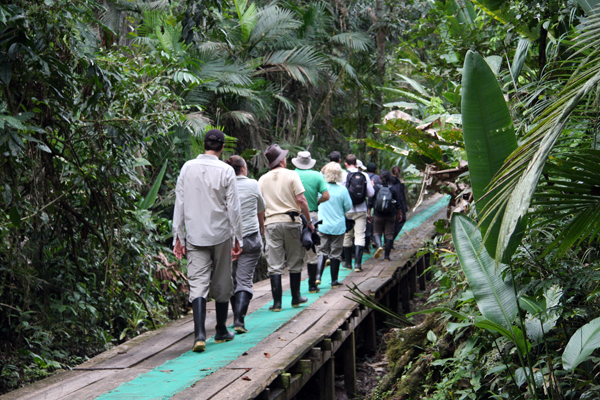Maquipucuna is one of Ecuador’s most pristine and exciting rainforest reserves and offers numerous opportunities for birdwatching. Ecuador’s vast hummingbird population along with other exotic inhabitants can keep nature lovers entertained for days on end. Maquipucuna, in particular, displays a profusion of flora and fauna and easily warrants more than just a day trip.
Paradise on Earth
Maquipucuna is a 6000-hectare cloud forest located only 45 minutes outside of Quito, making it a popular destination for birdwatching. Ecuador’s profusion of wildlife and bird species makes it an ideal country for beginners as well as seasoned birders. The reserve itself contains four different habitats, with dramatic climate changes due to the varying altitudes that range from 900 to almost over 2800 metres above sea level. Maquipucuna is home to 4% of the world’s bird biodiversity, which has led to its status as one of the world’s top five biodiversity hotspots.
Vast Array of Birds and Wildlife
Just a few of the birds found in Maquipucuna include the Cock-of-the-rock, Toucan Barbets, Red-headed Barbets, Golden-headed Quetzal and Esmeralda’s Antbirds. Many visitors also travel to the reserve for the pleasure of abundant opportunities for hummingbird sightings while birdwatching. Ecuador is home to over 132 different hummingbird species and they are easy to spot and highly entertaining to observe. The mammals that inhabit the Maquipucuna forest are also fascinating to see, and many people make pilgrimages to catch sight of these special creatures. South America’s only bear species, the Spectacled Bear, is found in the Maquipucuna reserve during fruiting season. Other mammals that are frequently seen are armadillos, pumas, anteaters and over 19 different species of bats.
Historical Value
Maquipucuna was believed to have been inhabited by the pre-Incan Yumbo tribe. Their burial sites and relics have been found in the reserve and pre-Incan trails have been found leading to the Chachillacta, known as the “land of the salt”. Before colonial times, Maquipucuna was the primary source for salt for the country’s capital city, Quito. Many of these ancient trails can still be followed today, and usually lead to lush watering holes and waterfalls throughout the reserve.
Of all the South American countries to visit, this one offers perhaps the best wildlife sightings and opportunities for birdwatching. Ecuador’s incredibly diverse population of birds is so condensed within a small geographical area that it is a superb location for beginners to visit to guarantee a fruitful experience.






